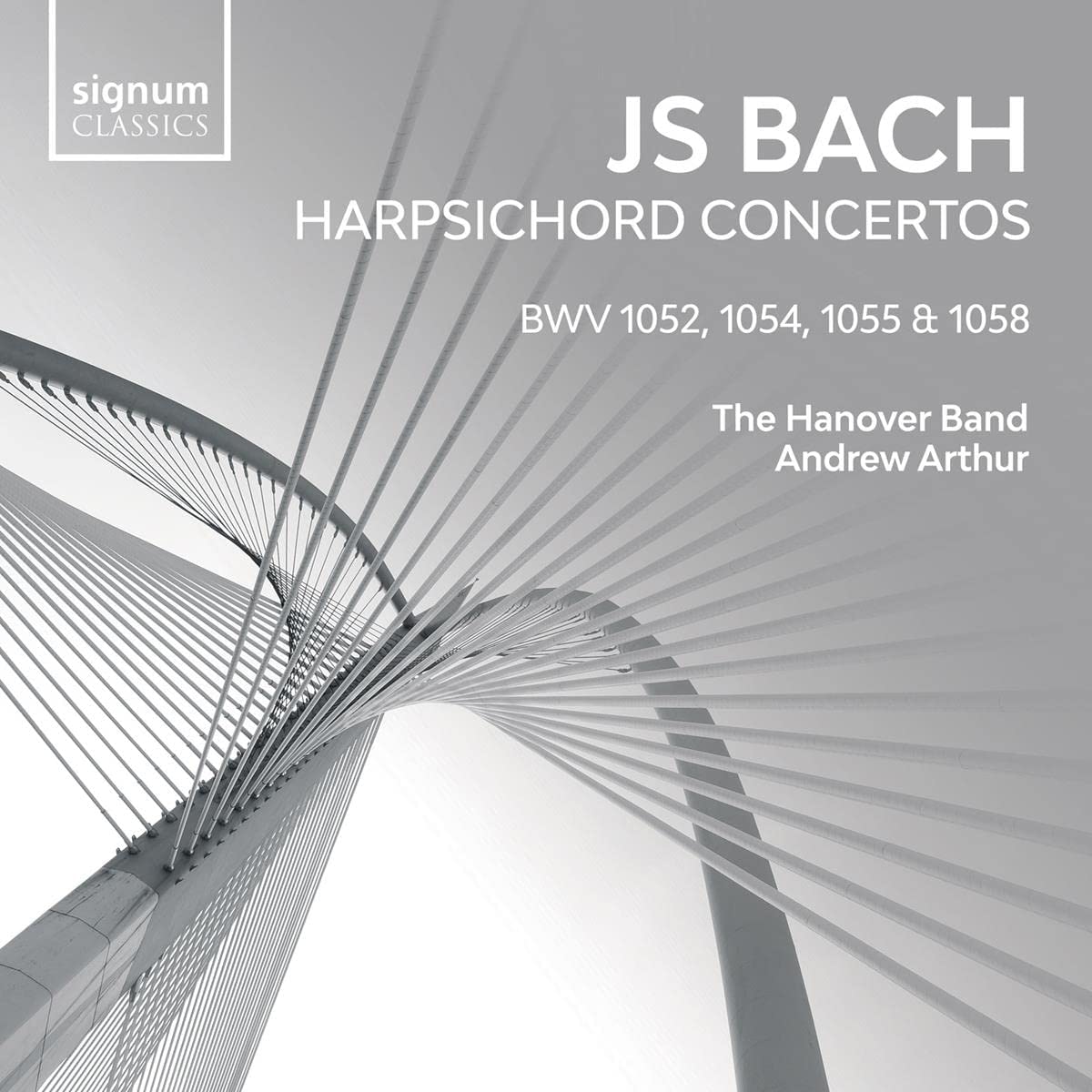The Hanover Band, Andrew Arthur director and harpsichord
69:07
Signum Classics SIGCD 710
This fine first CD – the second will include the other three harpsichord concertos and Brandenburg V – was recorded in the admirable acoustic of St Nicholas, Arundel and uses a harpsichord by Andrew Garlick, built in 2009 and after Jean-Claude Goujon, 1748 and tuned in a 1/6 comma circulating meantone at A=415.
What is particularly good is the splendid balance between the single strings of the Hanover Band’s A team and the harpsichord – a resonant and singing instrument, well able to hold its own. What is very odd is that the experienced and skilled leader of the Hanover Band, Theresa Caudle, is not mentioned at all in the liner notes, which list the violin II, viola, violoncello, double bass and harpsichord together with details of their instruments. This reflects poorly on Signum’s production team.
It is now largely accepted that using single strings is the best way to balance these exquisite concerti, the majority of which had earlier lives as concerti for violin before being re-scored for a six-instrument ensemble for Bach’s concerts in Zimmermann’s coffee-house. The fascinating detail of their reworking for keyboard can be studied in NBA VII.4, where you can see how the articulation in the cembalo part frequently differs from the identical line in the first violin, as well as seeing how the left hand of the keyboard part often varies from the basso continuo part, with its suggestive flourishes frequently hinting at the polyphonic overtones of Bach’s writing. Sometimes, the articulation of the sections is enhanced by suppressing the 16’ in some parts, as in the Adagio of BWV 1054 where only a violoncello plays the continuo line.
But these subtleties aside, what is so beguiling about these performances is the absolute integration of the players with one another. Not one player fails to contribute and the way the first violin and the right hand of the harpsichord play in complete sync – even when negotiating slight inégales in the rhythms – is so elegant and makes for that fluidity which only one-to-a-part can give.
Although the excellent performance by Francesco Corti and Shunsuke Sato uses a second harpsichord to play the continuo of BWV 1055 for All-of-Bach, this marvellous performance beats it for natural clarity and for the way all the players – even when they appear to be just filling in the realisation of the continuo – shape their lines to make them sing in response to one other and to the free but perfectly rhythmic playing of Andrew Arthur.
This is not only a very ‘correct’ textbook version that I shall enjoy returning to for a long time, but it is fluid, inventive and utterly musical. You should get it, even if you have Conti’s performances with Il Pomo d’Oro. Andrew Arthur is not a soloist in the modern sense of the word – out to stamp his personality on this music: he is content to help the ensemble to listen to each other and above all, to listen to Bach. There are no grand gestures or extremes of tempi. This is the best we are likely to get and I look forward to the second CD immensely.
David Stancliffe
